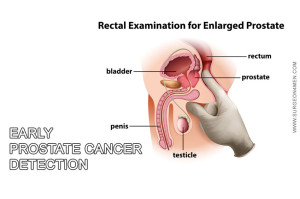Prostate Surgery Types
The medical term for complete or partial surgical removal of the prostate gland is prostatectomy. The two most important reasons for undertaking prostatectomy are Benign Prostate Hypertrophy (BPH) and prostate cancer. Sometimes, persistent bleeding through prostate gland or problems related to urination may also warrant the need of surgical removal of the prostate gland.
There are various types of prostate surgeries and their choice usually depends upon the discretion of the physician. All the techniques have their own pros and cons and a particular prostate surgery may be suitable for a specific condition but may not be that effective in treating some other prostate condition. Let us look at the commonly available prostate surgery types.
 Traditional Open Surgery
Traditional Open Surgery
This operative technique is most suitable for treating prostate cancer where the entire gland, along with its draining lymph nodes, is removed. The operation is done under general anesthesia. An incision is made right from the navel to the pubic bone.
Laparoscopic Prostate Surgery
This is usually done in case of benign prostate hypertrophy. Instead of the large incision made in case of traditional surgery, five small keyhole incisions are made in between the navel and the pubic bone, under general anesthesia. It is a minimally invasive procedure. Through these incisions, a video camera, a light source and instruments for performing the surgery are introduced into the abdomen. The surgeon operates on the prostate with the help of the video camera.
Robotic Prostate Surgery
This procedure is similar to the laparoscopic surgery except that the prostate gland is operated upon by a robot which, in turn, is controlled by the surgeon.
In both laparoscopic surgery and the robotic surgery, the area is irrigated using a sterile solution and Foley’s catheter is inserted after the gland has been removed.
Endoscopic Prostate Surgery
In endoscopic prostate surgeries, a cystoscope is introduced through the penis all the way up to the prostate gland. So, there are no surgical marks on the abdominal wall. There are several types of endoscopic prostate surgeries. They are:
 Transurethral Resection of the Prostate (TURP): This technique is commonly employed to remove prostate cancer. After introducing the cystoscope into the prostate gland, the surgeon either uses a scalpel or an electrified wire loop to remove the prostate tissue. After cutting the gland, the area is well irrigated. Small pieces of prostate tissue may get flushed into the urinary bladder. Foley’s catheter is introduced through which blood stained urine comes out for some days. One may also notice pieces of prostate tissue inside the collection bag attached to the catheter.
Transurethral Resection of the Prostate (TURP): This technique is commonly employed to remove prostate cancer. After introducing the cystoscope into the prostate gland, the surgeon either uses a scalpel or an electrified wire loop to remove the prostate tissue. After cutting the gland, the area is well irrigated. Small pieces of prostate tissue may get flushed into the urinary bladder. Foley’s catheter is introduced through which blood stained urine comes out for some days. One may also notice pieces of prostate tissue inside the collection bag attached to the catheter.
- Transuretheral Microwave Therapy (TUMT): This technique involved the burning of the prostate gland tissue. A specialized catheter is introduced into the gland through the urethral opening. A small microwave antenna is introduced through the catheter. The antenna is heated to 113 degrees Fahrenheit. It is believed that at this temperature, the tissue of prostate gland dies. But such high temperature may cause pain during the procedure. It is difficult to burn the entire tissue in one sitting. Therefore, TUMT involves multiple sittings. This procedure is not suited for prostate cancer treatment.
- Transurethral Electro-Vaporization of the Prostate (TUEVAP): It is similar to TURP procedure except for that instead of using a scalpel or an electrified loop, an electro-cautery is used to remove the prostate tissue.

